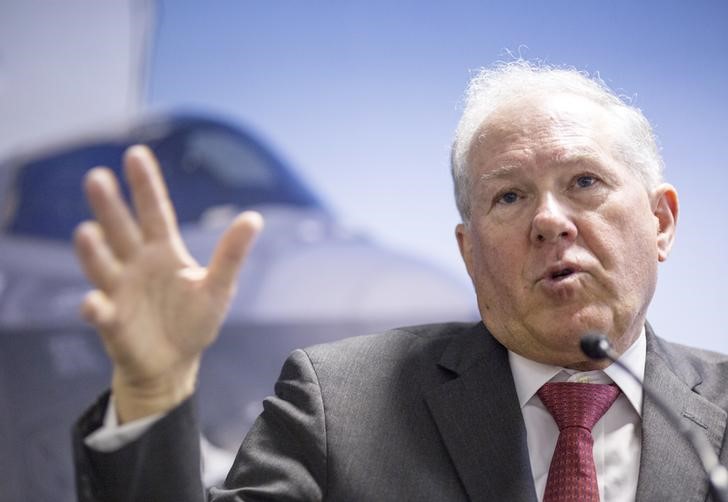By Andrea Shalal
WASHINGTON (Reuters) - The U.S. military's plans to spend up to $15 billion over the next five years on funding research should help encourage U.S. weapons makers to spend more on internal research instead of share buybacks, the Pentagon's chief arms buyer said.
Defense Undersecretary Frank Kendall, who has been critical about the high level of buybacks in the weapons industry, said he hoped new research funding in the Pentagon's fiscal 2017 budget proposal would help motivate companies to invest more in internal research and development, or IRAD.
"Winning those opportunities will depend upon the technologies industry has to offer, which depends on IRAD. I think as industry sees that, they'll respond," Kendall told Reuters in an interview late on Tuesday.
Kendall acknowledged that publicly traded arms makers and their boards were focused on near-term metrics, including share prices, but said the longer-term health of those companies depended on their ability to innovate and develop new products.
"Chocolates give me an instant gratification, but it's not the only thing I eat," Kendall said. "You've got to be concerned as a manager and as a board member, I would hope, about the long term health of the company and its long term competitiveness."
Deputy Defense Secretary Robert Work last week said the Pentagon's next budget request would include $12 billion to $15 billion in funding for war gaming, experimentation and the demonstration of new technologies aimed at ensuring a continued military edge over China and Russia.
Top U.S. weapons makers, including Lockheed Martin Corp (N:LMT), Boeing Co (N:BA) and Northrop Grumman Corp (N:NOC) are anxiously awaiting news about which weapons and research programs will be funded in the fiscal 2017 defense budget that is being finalized by Pentagon officials this month.
Kendall declined to give any details about the budget plan, or which weapons programs could take a hit given $17 billion in cuts required under a two-year budget deal with Congress.
Industry executives were heartened earlier this year when Kendall dropped a plan that would have required government "sponsors" in order for firms to bill IRAD projects as overhead.
But they say the department could still do more to encourage firms to scale back buybacks and shift funding into research, or even merger and acquisition activity, by allowing them to bill more of those costs to the government through overhead.
"Kendall has to get creative and create more incentives," said one senior industry executive, who asked not to be named. The executive said companies often waited for years to find out that the department would not allow them to bill the costs of consolidating facilities after mergers, even though the moves were aimed at lowering the cost of weapons programs.
David Melcher, chief exeutive of the Aerospace Industries Association, told Reuters this year that share buybacks would likely diminish when interest rates began to rise and M&A activity picked up.

"You can only buy so many shares back before you're private," he said. "Even the Wall Street analyst crowd at some point will say, ‘When are you going to grow?'"